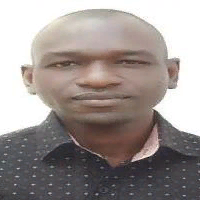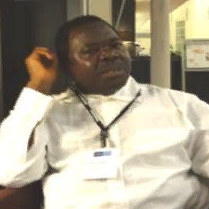International Journal of Engineering and Manufacturing (IJEM)
IJEM Vol. 7, No. 5, 8 Sep. 2017
Cover page and Table of Contents: PDF (size: 393KB)
Design Description of a Stand-Alone, Auto-Frequency Ultrasonic Brand of Weaver Bird Pest Control Device for Field Applications
Full Text (PDF, 393KB), PP.1-15
Views: 0 Downloads: 0
Author(s)
Index Terms
Ultrasound, stand-alone device, design considerations, integrated circuit (IC), habituation, weaver birds
Abstract
Preliminary studies conducted in the field of ultrasonic broadcast for bird pest control has identified among others, that ultrasound of specific frequencies and certain audio sounds can serves as effective parameters in weaver bird pest scaring. Of interest is ultrasound frequency of 35 kHz as the put-to-flight and stay-away frequency in bird homes, while 25 kHz holds in farm conditions. These findings set the stage for this work which is aimed at determining the compositions, dimensions and specifications of a stand-alone device capable of electronically generating ultrasound of the required frequencies and incorporating audio sounds of predators to effectively scare weaver birds away from farms while overcoming the challenge of habituation. The design consists of sections as: the solar power supply, tripping, timing, oscillatory, frequency selection, amplification, microcontroller, predator cry, LCD and ultrasonic transducer sections and their respective circuits. The design if implemented and tested, will ensure 360o horizontal ultrasound coverage and a vertical boost to effectively repel weave bird pests from the vicinity of broadcast.
Cite This Paper
A.G Ibrahim, O.D Oyedum, O.B Awojowogbe,"Design Description of a Stand-Alone, Auto-Frequency Ultrasonic Brand of Weaver Bird Pest Control Device for Field Applications", International Journal of Engineering and Manufacturing(IJEM), Vol.7, No.5, pp.1-15, 2017.DOI: 10.5815/ijem.2017.05.01
Reference
[1]Hangiandreou, J. Physics Tutorial for Residents: Topics in US: B-mode US: Basic Concepts and New Technology. Radiographics. 2003; 23 (4), 1019.
[2]Deepali, G., Balwinder, S., Harpreet, S. Design and Development of Pesticide Residue Detection System using EC and pH Sensor. International Journal of Engineering and Manufacturing (IJEM), Vol.6, No.2, pp.10-17, 2016.DOI: 10.5815/ijem.2016.02.02.
[3]Victor, P. Rodent Repellents. http://www.victorpest.com/advice/all-about/victor-repellents/types-of- repellents. Retrieved 2009-10-22.
[4]Subramanyam, B. Ultrasound and Arthropod Pest Control: Hearing is Believing! (pdf). Kansas State University; 2001.
[5]US FTC. Analysis of Proposed Consent Order to Aid Public Comment In the Matter of Global Instruments Ltd., and Charles Patterson". Federal Trade Commission; 2003.
[6]Ibrahim, A.G., Oyedum, O.D., Awojoyogbe, O.B., Okeke, S.S.N. Electronic Pest Control Devices: Their Necessity, Controversies and Design Considerations. The Int. J. Engr & Sci., 2013; 2(9) 26-30.
[7]Ibrahim, A.G., Oyedum, O.D., Awojoyogbe, O.B., Okeke, S.S.N. Developmental Features and Implementation Challenges of Electronic Pest Control Devices in Developing Countries. Int. J. Sci. & Engr. Res.2014; 5(2) 411- 416.
[8]Ibrahim, A.G., Oyedum, O.D., Awojoyogbe, O.B., Okeke, S.S.N. Ultrasound Investigation for determining the suitability of Ultrasonic Pest Control Devices on target pests in Specific Location using Bird Flight Data. A Case Study of Weaver Birds in Doko Community, Niger State, Nigeria. The Int. J. Engr. & Sci; 2015. In Press.
[9]Ibrahim, A.G. Development and Performance Evaluation of a Solar Powered Ultrasonic Device for the Control of Weaver Birds in Farms. A Ph.D Thesis, Department of Physics, Federal University of Technology, Minna, Nigeria; 2015.
[10]Ibrahim, A.G., Oyedum, O.D., Awojoyogbe, O.B., Ezenwora, J.A and Aje, J.D. Pest and Environmental Specific Application of Ultrasound in Pest Control. Advances in Multidisciplinary and Scientific Research, 2016; 2(4) 189 – 200.
[11]Grob, B., Mitchel, E.S. Basic Electronics, nineth ed. Glencoe/McGraw-Hill, Columbus; 2003.
[12]Ezenwora, J.A. Development and Performance Evaluation of a Power System Based on the Characterisation and Performance Evaluation of P-V System in Minna, Niger State, Nigeria. A Ph.D Thesis, Department of Physics, Federal University of Technology, Minna, Nigeria; 2016.
[13]Oyedum, O.D., Ugwoke, P.E., B.M Olomiyesan, B.M., Ibrahim, A.G. Performance Evaluation of Polycrystalline Silicon Module under outdoor conditions in North Central, Nigeria. Nig. J. Phy., Special Edition, 2014; 37-42.
[14]Ojeniyi, M.O. Urban Expansion and Environmental Impact in Minna Metropolis. M.Sc Thesis, Geography Department, Bayero University, Kano, Nigeria. 2014.
[15]Tony, V., 2010. LM555 and LM556 Timer Circuits, Doctronics Williams Lab. Retrieved 15/7/ 2010 from http://www.matni.com/Arabic/Elec.../NE555%20DETAILS/555.html
[16]Ryan, V. The 741 Operational Amplifier. (2009). Retrieved 17/9/ 2011 from http://www.technologystudent.com.
[17]Usifo, O., Research Project Implementation Made Ease, first Edition. ECAS Ltd, Nigeria; 2004.
[18]National Semi-conductor Data sheet LM 386. www.alldatasheet.com/datasheet-pdf/pdf/9027/NSC/LM741.html
[19]Encyclop?dia Britannica. Ultrasonic Transducer. Ultimate Reference Suite Chicago; (2010).
[20]Khapare, N.K., P.S. Bodke, P.S., Khapare, K.N. Development, Performance and Evaluation of Ultrasonic Pest and Insect Repelling System. Int. J. Engr. Res. & Gen. Sci. 2015; 3(2) 19-25.


